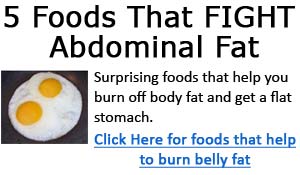Finally, if the chronic pain occurs after an injury, targeted exercise can strengthen the muscles around the injury site, taking pressure off the injured tissue. Of course, the wrong kind of exercise can actually re-injure the area too, so it’s important to get professional guidance from a physiotherapist, or a personal trainer who specialises in rehabilitation work, rather than trying to go it alone.
USING EXERCISE TO HELP YOU MANAGE PAIN
An important disclaimer: this article is written assuming that, if you’re experiencing chronic pain, you’re already working with a healthcare professional to manage it (and if not, you need to be!) Check any suggestions you want to try with that professional, and follow their recommendations. Also, if an activity increases your pain levels, don’t do it. It’s OK to have muscles that are tired and slightly sore the day after. It’s not OK to experience any joint pain or sharp, stabbing pain during or after exercise, or anything that makes your chronic pain worse. If you experience any of these, seek advice from your healthcare professional as soon as possible.
That said, the most beneficial kind of exercise depends very much on the individual. One of Optimum Life’s key principles is that activity will always do more good if it’s something you enjoy. This is even more important when you experience chronic pain, when something you start dreading or tensing up about can quickly make your condition worse. Additionally, it helps if you choose activities that give you a good range of aerobic, strength, and flexibility exercises. Good potential choices to start with include walking, swimming, stationary cycling, yoga or t’ai chi.
Finally, be aware that exercise will be most helpful for pain management if it’s one out of many tools you use. Medication, diet, visualisation, relaxation, acupuncture and biofeedback have all been shown to have positive effects on pain individually – but the best effects seem to come from taking a multi-disciplinary approach. Take time to research the different therapies available to you. There are a number of excellent pain management sites online – two of the more popular ones include The Chronic Pain Haven or The Mayo Clinic.
Chronic pain will never be fun to live with, but there are options available that make it more manageable. Give yourself the gift of being willing to try out different options until you find the combination that’s right for you, and don’t be afraid to ask for help if you need it. Meanwhile, until the next issue, may every day bring you closer to your Optimum Life.
If you have any questions about this week’s article, please don’t hesitate to contact me. Otherwise, until next time, may every day bring you closer to your Optimum Life.
>> Click here for a real solution that will help you Burn Off the Fat

 When you find yourself living with pain every minute of
every hour of every day, just getting up in the morning
can seem like too much to ask. When you find it hard to
remember the last time you weren’t in pain, it’s
not unusual for fear and depression to take hold and drag
you into a downward spiral that makes the pain even worse.
Even on good days, exercising can still be the last thing
you feel like doing.
When you find yourself living with pain every minute of
every hour of every day, just getting up in the morning
can seem like too much to ask. When you find it hard to
remember the last time you weren’t in pain, it’s
not unusual for fear and depression to take hold and drag
you into a downward spiral that makes the pain even worse.
Even on good days, exercising can still be the last thing
you feel like doing.